History Center of Cheboygan County / Old Jail
Introduction
Text-to-speech Audio
Images
Jail building after becoming museum
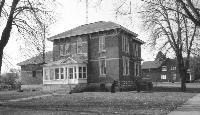
Artists rendering of proposed jail in 1880
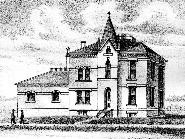
West side of sheriff's residence ca 1912
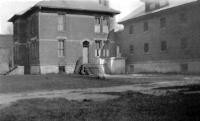
Residence and jail in the 1950s
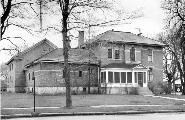
Current museum
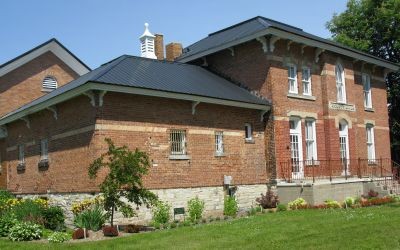
Jail cell
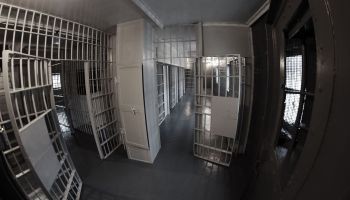
Native American cabin
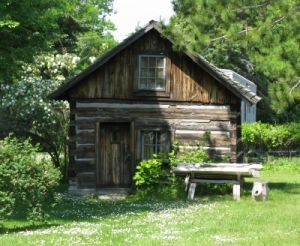
Log cabin before it was moved to museum
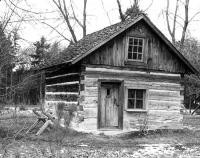
Roofing the restored log cabin
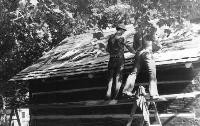
Old Courthouse
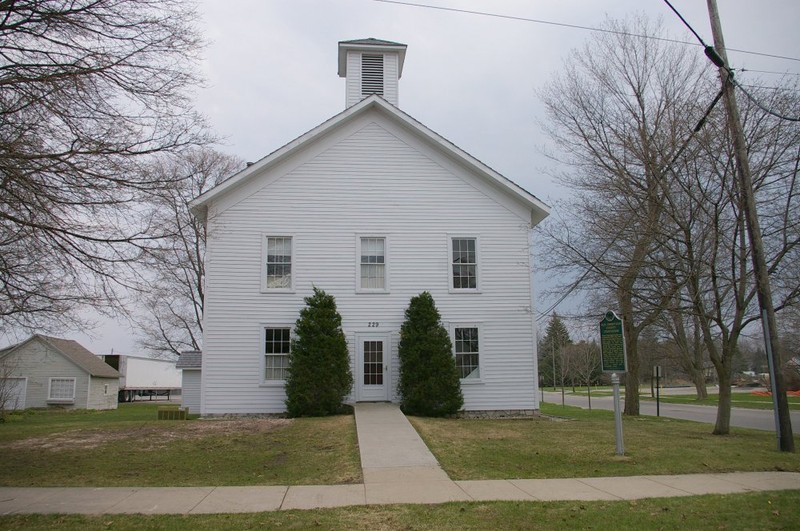
Backstory and Context
Text-to-speech Audio
When Cheboygan County was first established in the mid 1850s, a log building was used for a county jail in Duncan City. Later, a log jail was built on Huron Street. By 1879, Cheboygan County’s population reached almost 6,700 and the log jail was inadequate. A new jail and sheriff’s residence were built on these grounds in 1880 for around $5,000. There was one entrance for both the residence and the jail, with a passage to the left which allowed prisoners to enter the jail separate from the house. The sheriff’s wife was responsible for the cooking, cleaning, and laundry for the prisoners. Ten different sheriffs and their families lived and worked in this building over the next 89 years.
The jail was deemed inadequate and condemned by the State Board of Public Corrections and Charities in 1911. A two-story addition with eight cells on each level was added in 1912. Due to fire safety regulations, the upper level was never finished or used. The jail continued to be used until the current county building on South Main Street was constructed in 1968. The building was then deeded to the Historical Society of Cheboygan County and has remained a museum ever since.
Visitors will also find a Native American cabin on the premises. The cabin was one of three remaining cabins after the historic “burnout” of a settlement on Burt Lake. The settlement was known as “Indianville” and they believed they owned the rights to the land. A timber speculator named John McGinn believed that the property belonged to him after purchasing a section of land. In October of 1900, McGinn went with the sheriff and a few deputies to the settlement. They arrived in the daytime when most of the men were working in the lumber industry. McGinn and the others took the possessions of the residents and dumped them in the nearby road. They then doused the houses with kerosene and set fire to the village. About fifteen buildings were engulfed in flames. This cabin is the only one left in existence from the village. It was moved from its original location in 1923. It was then donated to the History Center and restored in 1976.
The Spies Heritage Hall, also located here, was dedicated in 1997. This building includes exhibits such as logging in the late nineteenth and early twentieth centuries, a one-room schoolhouse, military exhibits and early twentieth century tourism. The Old Cheboygan County Courthouse is located right across Huron Street from the museum. This courthouse was built in 1869 and is on the National Register of Historic Places.
Sources
“Cheboygan County Courthouse.” National Archives and Records Administration, National Archives and Records Administration, catalog.archives.gov/id/25339135.
“Cheboygan County.” 0247MC08, www.courthouses.co/us-states/m/michigan/cheboygan-county-2/.
Friday, Matthew J. “Go Directly to Jail.” Cheboygan Daily Tribune - Cheboygan, MI, Cheboygan Daily Tribune - Cheboygan, MI, 25 June 2019, www.cheboygannews.com/news/20190624/go-directly-to-jail.
Friday, Matthew. “Morality Vs. Legality: Michigan’s Burt Lake Indians and the Burning of Indianville.” The Michigan historical review 33.1 (2007): 87–97. Print.
The History Center of Cheboygan County - Home, www.cheboyganhistory.org/.
The History Center of Cheboygan County - Home, www.cheboyganhistory.org/.
The History Center oThe History Center of Cheboygan County - Home, www.cheboyganhistory.org/. f Cheboygan County - Home, www.cheboyganhistory.org/.
The History Center of Cheboygan County - Home, www.cheboyganhistory.org/.
The History Center of Cheboygan County - Home, www.cheboyganhistory.org/.
The History Center of Cheboygan County - Home, www.cheboyganhistory.org/.
The History Center of Cheboygan County - Home, www.cheboyganhistory.org/.
The History Center of Cheboygan County - Home, www.cheboyganhistory.org/.
The History Center of Cheboygan County - Home, www.cheboyganhistory.org/.
The History Center of Cheboygan County - Home, www.cheboyganhistory.org/.
“Cheboygan County.” 0247MC08, www.courthouses.co/us-states/m/michigan/cheboygan-county-2/.
